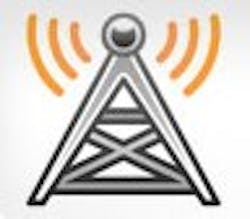Industrial Automation Standard: Dot Eleven A
According to the International Society of Automation (ISA), the overall ISA100 Committee objectives were three:
1. Define the environment in which wireless technology is deployed
2. Identify and define the technology and life cycles of wireless equipment and systems
3. Identify the applications of wireless technology.
The third objective, of course, will never be met—it really cannot be met, because it is forever on the move. The best that anyone can do, whether standards-bearer ISA, journalist or technology maven, is to try to record the more intelligent things that end-user companies and engineers come up with. The applications will always outstrip the codified list, and that is how it should be.
As for the first two: the underlying goal (using ISA’s words) for the ISA100.11a standard was to define the right technology mix “to provide reliable and secure wireless operation for non-critical monitoring, alerting, supervisory control, open-loop control and closed-loop control applications.” The idea is to specify the basic needs for wireless applications of low data rate/low power consumption where latencies around 100 milliseconds are workable—with (again, ISA’s words) “optional behavior for shorter latency.”
In practice, when equipment that conforms to ISA100.11a standards officially reaches the market, there will exist a baseline technology that enables speeds of 1/10 of a second and probably less—maybe even considerably less.
| The ISA100.11a standard functions specified fall into the following categories: |
| The protocol suite |
| System management |
| Gateway definition |
| Security specifications. |
The protocol suite is extensive and draws from, or extends, a number of existing standards, including IEEE 802.15.4 promulgated by the Institute of Electrical and Electronics Engineers, and the Internet Engineering Task Force (IETF) low power personal area network protocol suite built on it, the 6LowPAN family. Channel hopping is part of it, as is mesh technology, but it would take far more space than available here to describe it all in detail. It is meant to be flexible enough to connect to any existing manufacturing communications bus or host structure, and people are actively trying to drive convergence with the published WirelessHart standard, but the effort is far from over.
The system management aspect of the standard is a major one, at least according to Dave Kaufman, wireless business manager for automation vendor Honeywell Process Solutions, in Phoenix, and a .11a committee member. “Conceptually, the system manager is a telephone switch operator,” he says. “It’s the mechanism that allows anyone, speaking any language (or communications protocol), to have their time on the line, in a way that allows everyone time to talk efficiently and effectively. It’s the basis for building a single, shared medium, or RF (radio frequency) zone over an entire plant or facility. Every plant has multiple communication protocols and needs, and the ISA100.11a standard system manager gives you one wireless telephone network to communicate across it.”
Multiple form factors
Just as there will be .11a-compliant sensors and instruments, there will also be an ISA100.11a system manager product. However, its form factor can, as Kaufman says, “be just about anything—software on a server, a board in a computer, a stand-alone appliance in a box, a chip on a device… You name it. Ultimately, this kind of flexibility is a good thing, because every plant has a different communications need and a different physical setup for networking and control. The important thing is that the system manager’s going to be there and it’s going to work.”
Kaufman indicates the standard also recommends a second management product: the security manager. “This one will have to be installed in a very secure area, because you don’t want but a few people with access to it,” he says. “The users on the committee, and the wireless experts, drove home the point that wireless security, and thus, a security manager, is absolutely top priority. Wires are relatively easy to secure. Wireless sends messages out to anyone who wants to listen. You can control that to a degree with directional antennas, but the real means has to be enough encryption and decryption to defeat a signal pirate.”
Subscribe to Automation World's RSS Feeds for Feature Articles
About the Author

Leaders relevant to this article:
